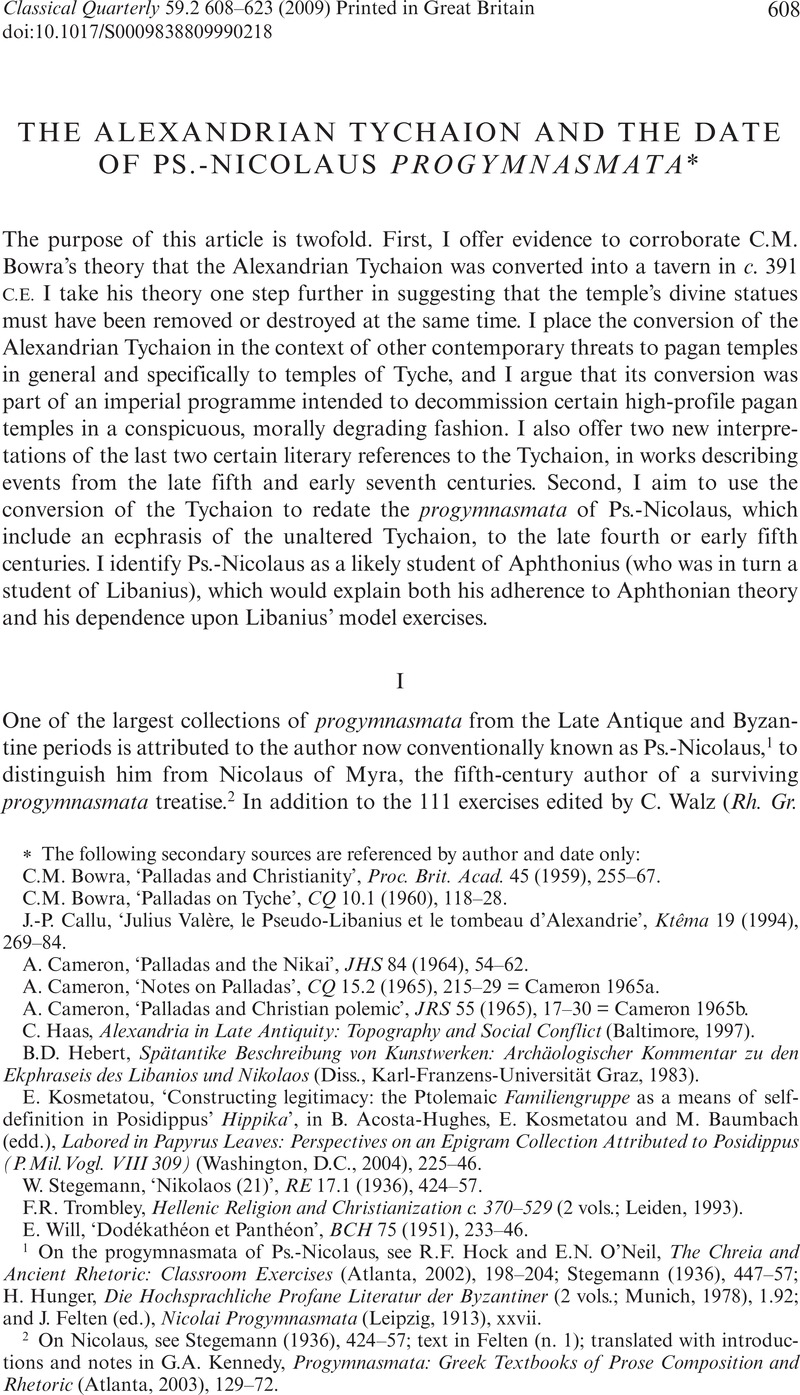No CrossRef data available.
Published online by Cambridge University Press: 23 November 2009

* The following secondary sources are referenced by author and date only:
C.M. Bowra, ‘Palladas and Christianity’, Proc. Brit. Acad. 45 (1959), 255–67.
C.M. Bowra, ‘Palladas on Tyche’, CQ 10.1 (1960), 118–28.
J.-P. Callu, ‘Julius Valère, le Pseudo-Libanius et le tombeau d'Alexandrie’, Ktêma 19 (1994), 269–84.
A. Cameron, ‘Palladas and the Nikai’, JHS 84 (1964), 54–62.
A. Cameron, ‘Notes on Palladas’, CQ 15.2 (1965), 215–29 = Cameron 1965a.
A. Cameron, ‘Palladas and Christian polemic’, JRS 55 (1965), 17–30 = Cameron 1965b.
C. Haas, Alexandria in Late Antiquity: Topography and Social Conflict (Baltimore, 1997).
B.D. Hebert, Spätantike Beschreibung von Kunstwerken: Archäologischer Kommentar zu den Ekphraseis des Libanios und Nikolaos (Diss., Karl-Franzens-Universität Graz, 1983).
E. Kosmetatou, ‘Constructing legitimacy: the Ptolemaic Familiengruppe as a means of self-definition in Posidippus' Hippika’, in B. Acosta-Hughes, E. Kosmetatou and M. Baumbach (edd.), Labored in Papyrus Leaves: Perspectives on an Epigram Collection Attributed to Posidippus (P.Mil.Vogl. VIII 309) (Washington, D.C., 2004), 225–46.
W. Stegemann, ‘Nikolaos (21)’, RE 17.1 (1936), 424–57.
F.R. Trombley, Hellenic Religion and Christianization c. 370–529 (2 vols.; Leiden, 1993).
E. Will, ‘Dodékathéon et Panthéon’, BCH 75 (1951), 233–46.